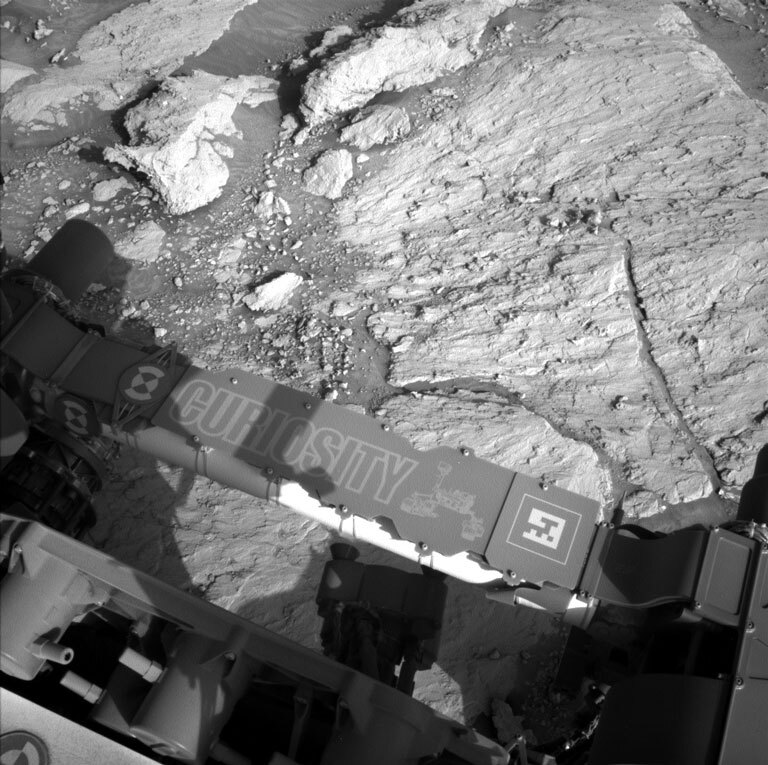2 min read

There is lots of bedrock in the arm workspace in front of the rover, and contact science targets were quickly selected this morning. The 3-sol weekend plan includes lots of interesting observations of the arm workspace and more distant targets, plus a 35-meter drive, so we had to work harder than usual to make sure that we leave enough energy in the battery to enable the next plan. This made planning a bit more stressful than usual for me as Science Operations Working Group Chair, but all ended well and I'm looking forward to seeing the results!
On Sol 3119, Navcam will search for clouds before Mastcam gets to work acquiring stereo mosaics of targets "Allas les Mines," "Agonac," "Ballerand," "Badefols," and some grey stones on the flank of Mt. Sharp. ChemCam will then fire its laser at a bedrock target called "Monsec" and take a 7x2 RMI mosaic of a distant ridge before Mastcam takes a 4x4 stereo mosaic of the bedrock surrounding Monsec. Later that afternoon, the arm work begins with MAHLI imaging of Monsec before and after it is brushed by the DRT. MAHLI will also take pictures of "Salagnac," a nearby bedrock target that will be measured by the APXS after sunset. APXS will also perform an overnight integration on Monsec. The APXS and ChemCam LIBS observations are intended to detect changes in the chemistry of the bedrock as we continue the traverse into the sulfate-rich materials discovered using orbital data.
The arm will be retracted on the next sol, allowing Mastcam multispectral and ChemCam passive observations of the brushed Monsec spot. Then the drive will begin. Because there is a ridge about 8 meters in front of the rover that blocks visibility of the terrain beyond, the rover will drive directly to the top of the ridge, then use the "guarded" driving mode to continue past the ridge, to a location that should allow better visibility of the path ahead. The guarded driving mode is a type of autonomous driving mode that has not been used very often lately to reduce wheel wear, but based on orbital images the bedrock is fairly smooth ahead, so it should be safe to let Curiosity check for hazards itself. Afterward, MARDI will take their standard twilight image.
Written by Ken Herkenhoff, Planetary Geologist at USGS Astrogeology Science Center







